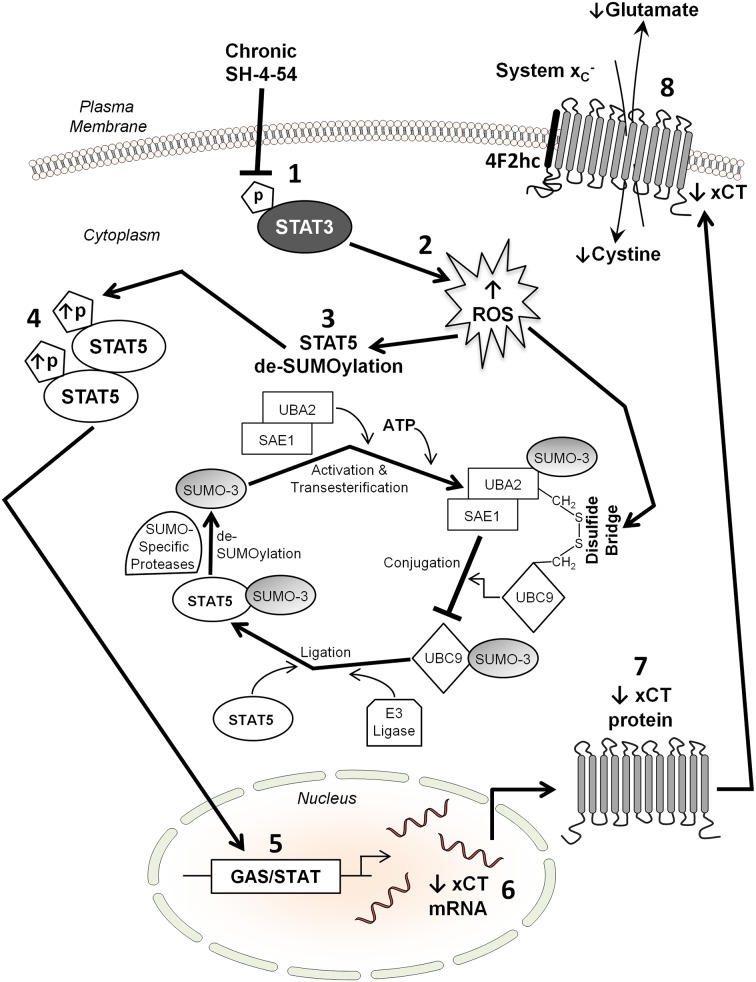Fig 7.
Proposed mechanism by which xCT is down-regulated in response to chronic SH-4-54 treatment, resulting in resistant clones of a subtype of aggressive, triple-negative human breast cancers cells (represented in the current study by MDA-MB-231 cells): (1) inhibiting constitutive STAT3 phosphorylation via continuous SH-4-54 administration (2) increases the level of intracellular ROS, resulting in (3) de-SUMOylation of STAT5 (details shown), which (4) enables STAT5 to be phosphorylated. Activated STAT5 translocates to the nucleus, (5) where it functions as a transcriptional repressor by binding to a GAS/STAT site in the xCT promoter, thereby (6) reducing xCT mRNA and (7) xCT protein levels. This ultimately destabilizes the cellular redox balance by (8) limiting the activity of system xc- at the plasma membrane, reducing the import of cystine concomitant with the export of glutamate.

